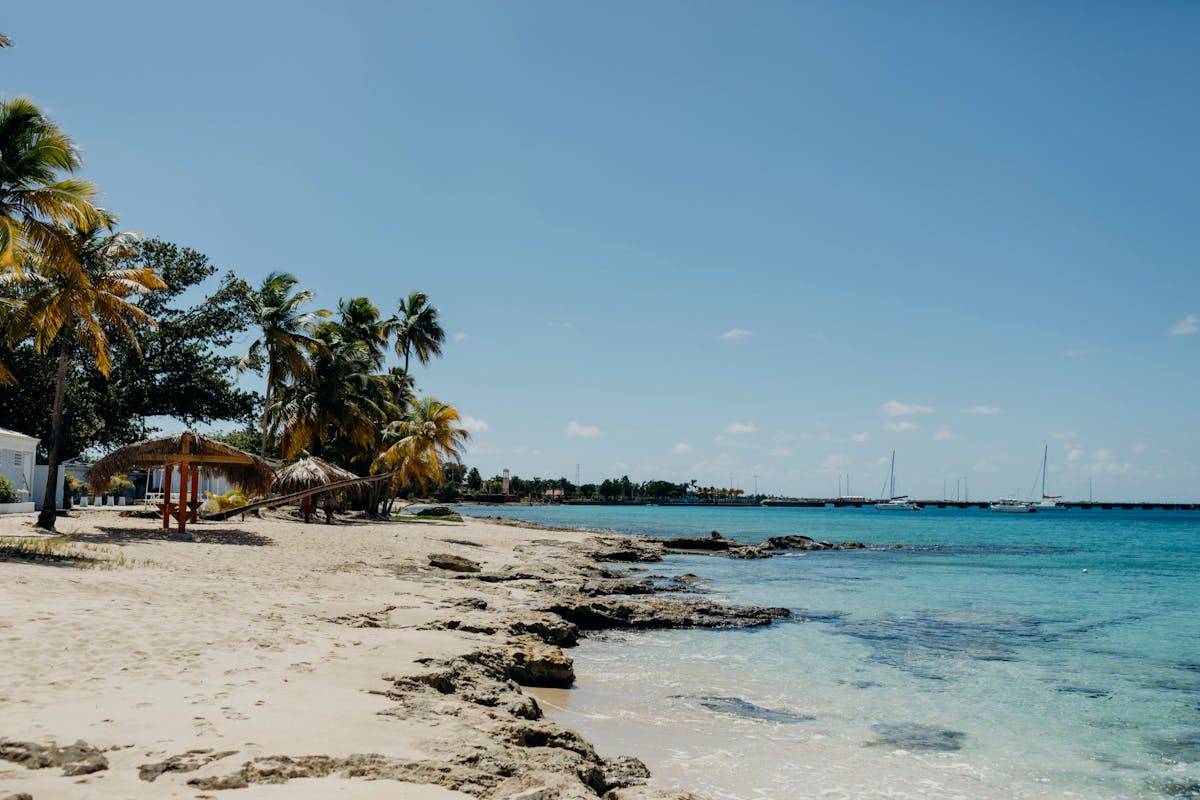
A beach on the west end of St. Croix, U.S. Virgin Islands. Photo by Meredith Zimmerman, The New York Times.
U.S. Virgin Islands
With three main islands and 50 smaller cays, there is a lot to see in the USVI. Why not go island-hopping via ferry or flight and get a taste of them all? Better yet, charter your own boat and sail this paradise in the Antilles. St. Thomas, the most popular entry point, has a little of everything: white sand beaches, rocky hills, luxury resorts, and dining and shopping in the port town of Charlotte Amalie. Next door, St. John is the quieter isle, home to Virgin Islands National Park with its jungle hiking, snorkeling and the acclaimed beach at Trunk Bay. Farther south, St. Croix is bigger and broader and formed from coral — and it’s the home of Cruzan Rum, served throughout the islands.
A Caribbean escape is often a winter pursuit, but the U.S. Virgin Islands have a few things going for them right now: Hurricane season won’t arrive until June (though the peak period is August through October). They’re open to Americans with a negative COVID-19 test, and you won’t need a test to return. The U.S. territory has had fewer cases per capita than every state but Hawaii, and they’d like to keep it that way, with a strict mask mandate, even on beaches. The isles have also made great progress in rebuilding after the devastating hurricanes Irma and Maria in 2017, when many hotels were destroyed. And with the usual cruise traffic curtailed, you just might have more of the beach to yourself.
Don’t miss: Locally sourced Caribbean chowder and curries; climbing the historic 99 Steps on St. Thomas; hiking at Virgin Islands National Park; snorkeling or diving at Buck Island Reef; horseback riding on St. Croix.
Getting there: Sun Country resumes nonstop service to St. Thomas next winter; connecting flights to St. Thomas and St. Croix are year-round. Fall hurricane season might offer deals for the daring. Travel hackers could also fly nonstop to nearby San Juan, Puerto Rico, and book a side trip to the USVI.
Note: Visitors must submit proof of a negative COVID-19 test, taken within five days of arrival, at usvitravelportal.com.
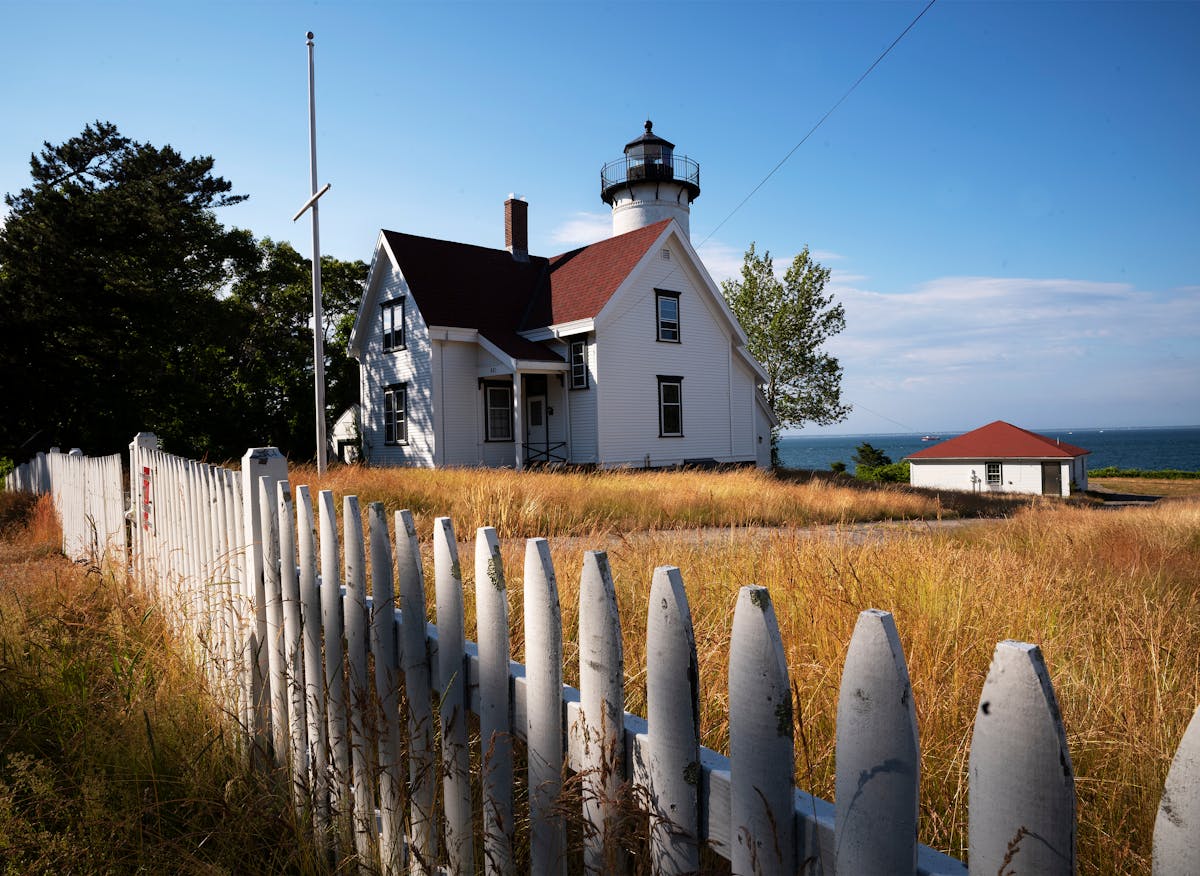
The West Chop Light and Coast Guard Station are shown on the island of Martha's Vineyard. Photo by Mark Lennihan, AP.
Martha’s Vineyard
The Kennedys and Obamas famously visited Martha’s Vineyard, but so did Grant, Coolidge, Franklin Roosevelt, Nixon and Clinton. Sure, that is rarefied presidential air — but it’s the salty air that counts. Most visitors to this triangular island just south of Massachusetts’ Cape Cod come for the beaches and the laid-back lifestyle, away from the mainland. But they also get protected woods and marshes, villages of gingerbread cottages and clapboard mansions, harbors lined with working fishing boats and towering sailboats and a sandwich that defines summer in New England, the lobster roll. It is a beachy escape enveloped in pure Americana.
Six distinct villages dot the island. Based on old seafaring terms borrowed by islanders, the towns are either up-island or down-island. For the nautically naive, up-island means west and down-island means east, because the whaling ships that once dominated the harbor “headed up” when traveling west. Up-island towns include Chilmark, West Tisbury and Aquinnah, where the Gay Head Lighthouse marks the westernmost spot. Down-island places include Edgartown, the oldest town; Oak Bluffs, an early enclave for freed slaves and now the island’s tourist hub, and Vineyard Haven.
Don’t miss: For a nighttime sugar fix, head to the back door of Back Door Donuts, in Oak Bluff, where doughnut business by day is conducted in the storefront, but out the back door at night, a quirky, long and delicious tradition. Martha’s Vineyard Agricultural Society hosts the annual Livestock Show & Fair, slated for Aug. 19-22 in West Tisbury.
Getting there: Delta has expanded service to Martha’s Vineyard and its neighboring island Nantucket this summer. American Airlines, Cape Air and JetBlue also serve the island. Mainland ferries run from Cape Cod, New York City and Rhode Island (vineyardferries.com).
Note: Not all beaches are open to the public and all are carry-in and carry-out, which means you take your trash with you when you leave. Visitors to Massachusetts who have been fully vaccinated or have had a negative COVID-19 test 72 hours before arrival are good to go; others are urged to quarantine for 10 days.
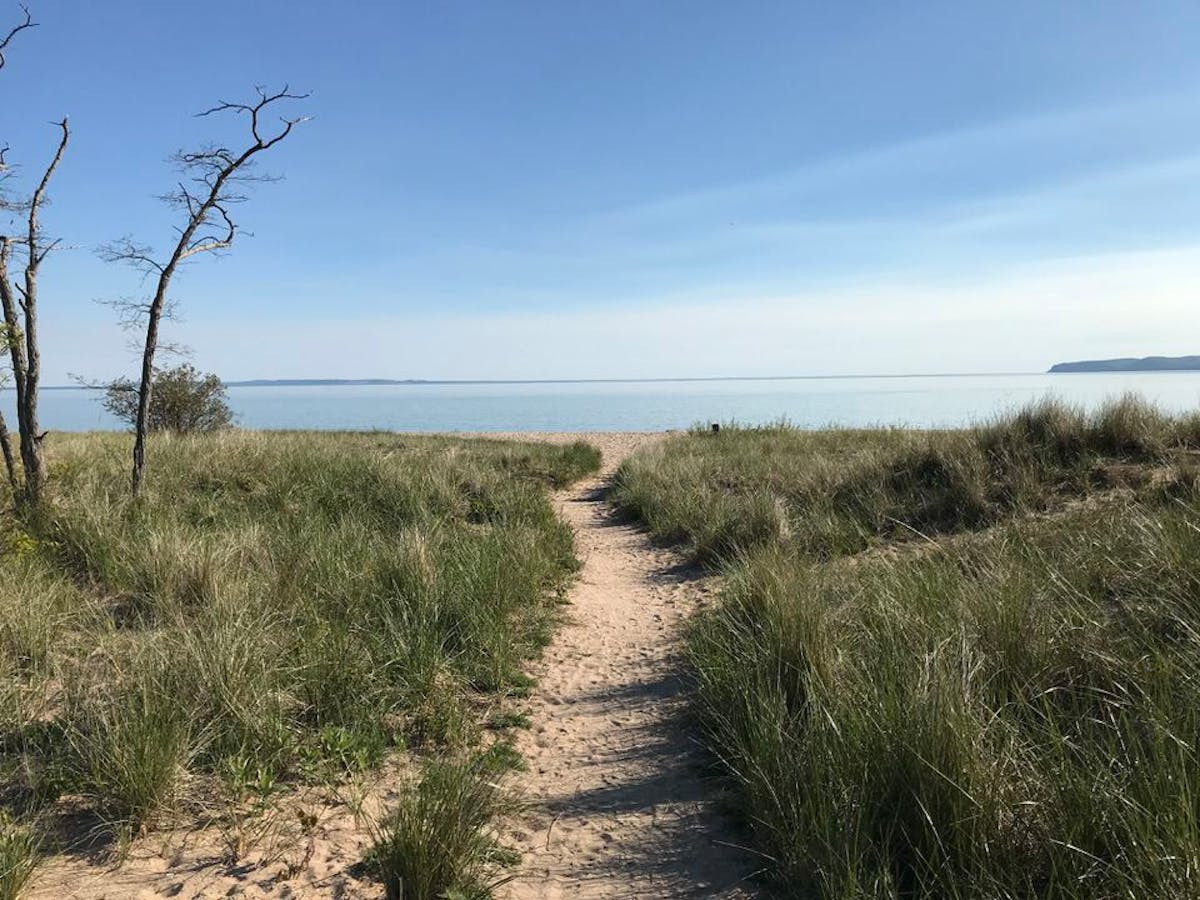
A sandy path leads to the shoreline at Sleeping Bear Dunes. Photo from Tribune News Service.
Sleeping Bear Dunes National Lakeshore
Get a new perspective on the Great Lakes — from 450 feet above the shores of Lake Michigan. Towering bluffs of sand along 65 miles of Michigan coastline are the most famous feature of Sleeping Bear Dunes, now celebrating its 50th anniversary as a national lakeshore a year late due to the pandemic. As you ascend the aptly named Dune Climb to one of many panoramic overlooks, it’s easy to see why these wind-carved mounds reminded the Anishinaabe of a giant ursine slumberer.
With all that sand, you can almost always hike to your own private stretch of beach, most refreshingly under the July and August heat. Take a canoe out on one of two rivers, the inland Loon Lake or — for experienced paddlers — turquoise Lake Michigan itself. To get even more socially distant, ride the ferry from Leland, Mich., to the park’s Manitou Islands (aka the two legendary “cubs” of Sleeping Bear). The 15,000-acre North Manitou is a newly designated wilderness area with backcountry campsites and miles of trails. The smaller South Manitou has visible historic shipwrecks and (ironically) the park’s only lighthouse, an 1872 beauty.
Thirty miles across Lower Michigan’s “Little Finger” is Traverse City, the Cherry Capital, also known for wine, beer, restaurants and quality of life. The National Cherry Festival is set for July 3-10.
Don’t miss: Stargazing under truly dark skies; searching for (but not taking home) Michigan’s famous Petoskey stone, a fossilized coral; inland lakes, bogs and streams; brewery hopping in Traverse City.
Getting there: Fly, drive and/or ferry. Delta Connection begins short daily nonstop flights from MSP to Cherry Capital Airport in Traverse City on May 5. It’s an 11-hour drive from the Twin Cities to Sleeping Bear, curling around the north end of Lake Michigan. For a fun if not faster direct route, cut across the lake aboard the storied S.S. Badger car ferry from Manitowoc, Wis., to Ludington, Mich. (ssbadger.com). A park pass ($25-$80) is required to enter Sleeping Bear.
Note: Michigan has had the country’s highest rate of COVID-19 cases in April. Check media and government reports for the latest information before traveling.
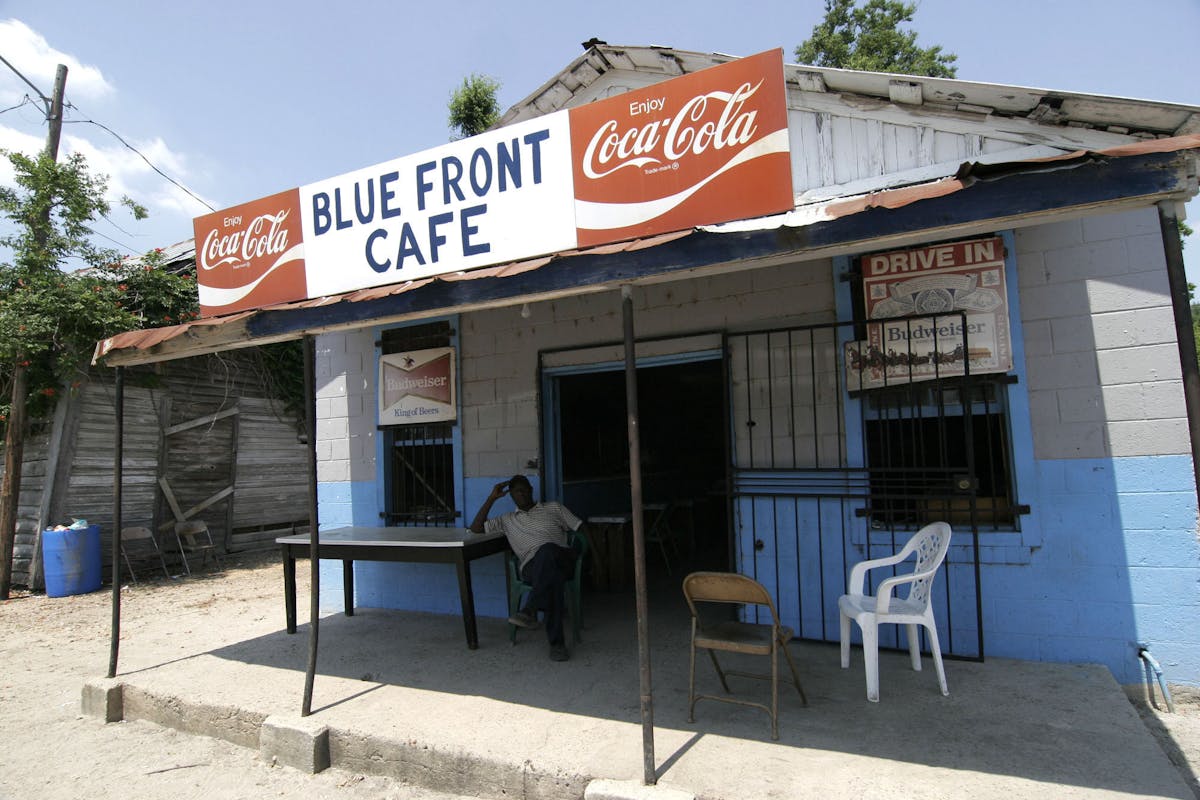
This rough hewn cinder block structure, the Blue Front Cafe, has featured some of the sweetest and roughest blues lyrics heard. Photo by Rogelio Solis, AP.
Mississippi Blues Trail
When Robert Johnson sold his soul to the devil at a crossroads in Clarksdale for a chance to play the blues, as legend has it, he chose well. The town in the Mississippi Delta now has more juke joints than any other in the region, and it is home to the Delta Blues Museum. It is also at the heart of a land rich in alluvial soil and the musical tradition born of poverty and pain that came to be the root of so much American music, the Delta blues. Jazz, rock, country: all these musical genres owe some debt to the musical inspirations that sprung from this region in the 1920s and ’30s. It has influenced the likes of Woody Guthrie, Elvis Presley, the Beatles and Bob Dylan.
The Blues Highway, aka Route 61, passes through small towns and by important sites roughly parallel to the Mississippi River, but the Blues Trail best represents the importance of the entire region in the realm of musical history. It is a constellation of markers concentrated on the river’s alluvial plain. Among the more than 100 places with markers are Ground Zero Blues Club and the Delta Blues Museum in Clarksdale, Club Ebony and the B.B. King Museum in Indianola, Dockery Farms in Cleveland and the Blue Front Café juke joint in Bentonia. In Tunica, the Gateway of Blues Museum is not far from the Hollywood Cafe, where fried green tomatoes, catfish and pecan pie are on the menu.
Don’t miss: Check out the 44th annual Mississippi Delta Blues and Heritage Festival, slated to take place in Greenville, Miss., Sept. 18.
Getting there: Ambling down by car on the Great River Road could help travelers transition to the slower pace of the South. Need speed? Memphis makes a good place to start, and offers the possibility of a side trip to the National Civil Rights Museum and the I Am a Man Plaza, commemorating the pivotal 1968 sanitation workers strike there and designed by former Hamline University professor Cliff Garten.
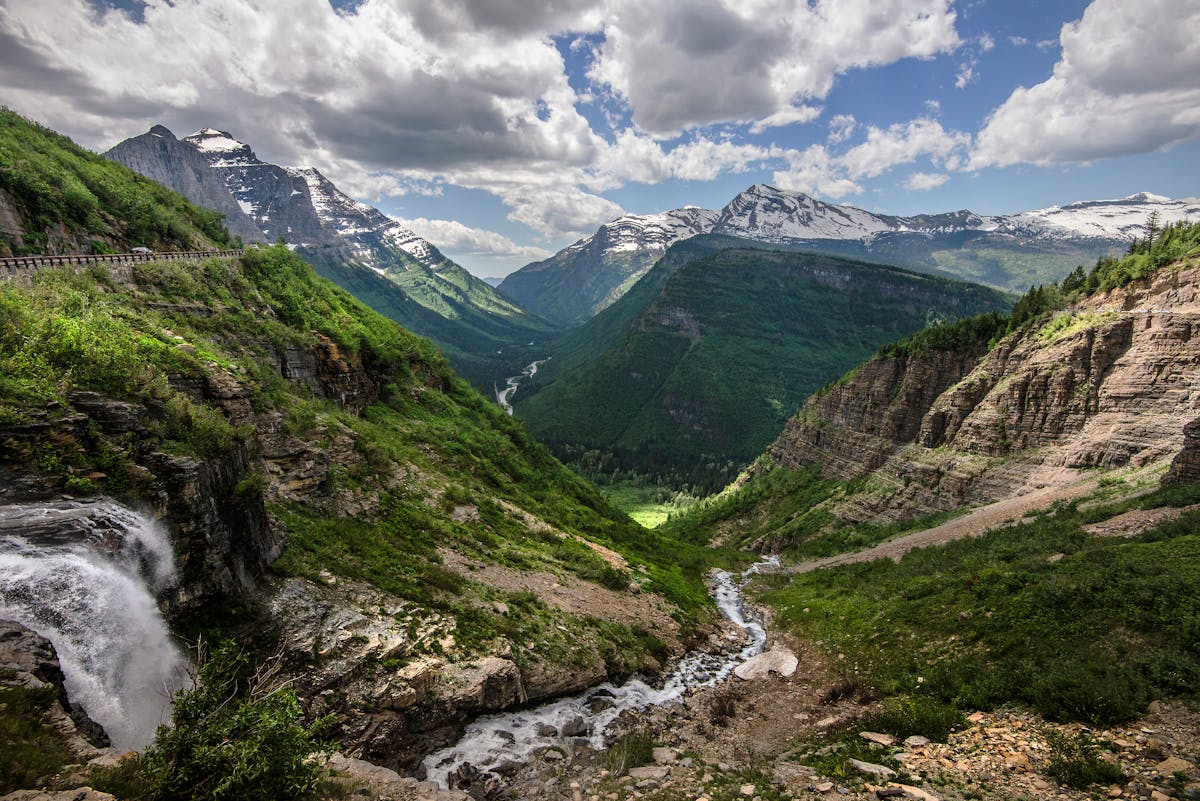
Engineering marvel Going-to-the-Sun Road cuts through the middle of Glacier National Park, but was designed to go relatively unnoticed. Photo by Tim Rains, National Park Service.
Glacier National Park
After you drive for hours under Montana’s Big Sky, the Rockies suddenly, stunningly appear like a wall on the horizon. Dubbed “The Crown of the Continent,” regal Glacier National Park is where snow-capped Matterhorn peaks, Pacific rainforest, northern woods and arid plains collide; where grizzlies, black bears, mountain goats, moose and elk coexist. In summer, melting snow fields form cascades down stark cliff walls, feeding blue-green glacial lakes. (Those waters flow in three directions: to the Pacific and Arctic oceans and the Gulf of Mexico.) It might take a lifetime to explore all of this on the nearly 700 miles of trails — but you can start.
Established in 1910, the country’s eighth national park got a tourism boost as Minnesota’s James J. Hill sought to promote it as “America’s Switzerland,” forging a rail link between St. Paul and Seattle and building Swiss chalet-style lodges that bustle today. In 1932 the park opened the 50-mile Going-to-the-Sun Road, one of America’s great drives with hairpin turns, stone bridges and tunnels and vertigo-inducing lookouts. A visitor center at chilly Logan Pass marks the Continental Divide. With advance reservations required this summer, and the glaciers disappearing due to climate change, this may be the year to dive deeper into Glacier than ever before.
Don’t miss: A vintage Red Bus Tour on Going-to-the-Sun Road; hiking the M any Glacier trails; a stay at the classic Lake McDonald Lodge; a drink at the backcountry Northern Lights Saloon.
Getting there: Delta and Sun Country have increased nonstop flights to Glacier Park International Airport in Kalispell, Mont. Or you can go 1910-style on the Amtrak Empire Builder, a scenic 18-hour rail journey from St. Paul to the park (amtrak.com). The two-day drive via Montana’s remote Hi-Line (Hwy. 2) or Lonesome Highway (Hwy. 200) is also worth it.
Note: An advance ticket, or a reservation for an in-park service — lodging, camping, boat rides, guided hikes, horseback rides, bus tours or park shuttles — is required to enter Going-to-the-Sun Road from May 28-Sept. 6. Tickets ($2 fee) will be released online up to 60 days in advance starting at 9 a.m. on April 29. A park pass ($35-$80) is also needed (nps.gov/glac).
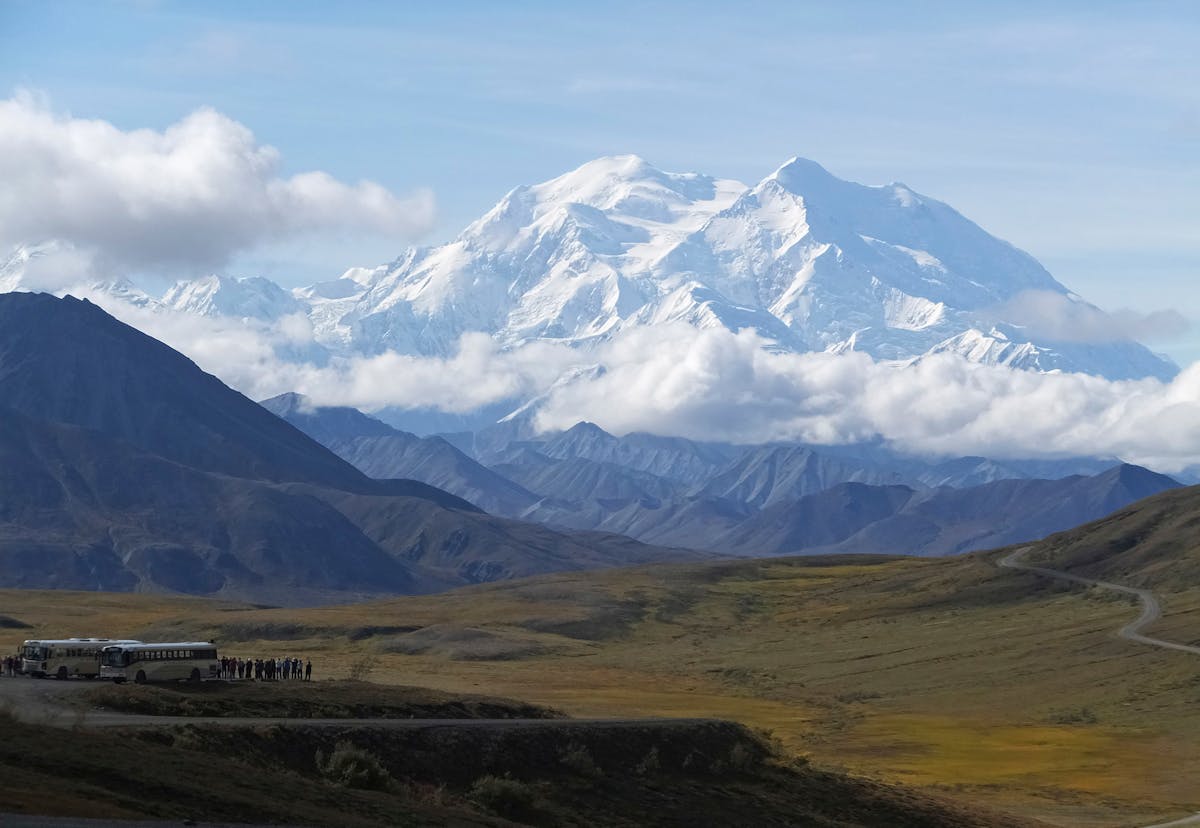
Sightseeing buses and tourists are seen at a pullout popular for taking in views in Denali National Park and Preserve, Alaska. Photo by Becky Bohrer, AP.
Alaska
As the most remote and wild place within the United States, the 49th state tops many bucket lists, even those not zeroing in on the U.S. In Alaska, visitors can trek on an ancient glacier, kayak along shoreline dotted with wildlife in the Inside Passage, hang with bear at Katmai National Park and Preserve and marvel at the immense beauty of Denali, North America’s highest peak. The state remains the Last Frontier, occupied by more moose and bear than humans. The rugged landscape and lively fishing towns are unlike anywhere elsewhere in the country or beyond, and a visit there is as easy as hopping on a plane. No passport, no currency exchange, just unfettered adventure.
Summertime, when the weather turns warm and the sun barely sets, if at all, marks a great time to visit. And this summer could be exceptional. Fewer cruise visitors will be disembarking at port towns, making Alaska’s wide open spaces more open than ever. Whether cruises sail to Alaska from Seattle this summer remains an open question since current law requires stops in Canada, and that country has banned cruise ships. A legislative push to change the law is underway but several cruise lines have already written off their 2021 Alaska cruises. For adventure seekers and wildlife lovers, Alaska promises an extra chill getaway in 2021.
Don’t miss: This summer, visitors in private vehicles will be able to gaze at Denali practically in its shadow. Denali National Park is offering access to a rest stop 15 miles closer to the famed peak than in previous years. A limited number of the Teklanika Road Permits became available April 20 at recreation.gov.
Getting there: Delta will add a second nonstop flight between MSP and Fairbanks beginning June 19; Sun Country starts weekly flights to Fairbanks on May 29. Delta and Sun Country also fly nonstop between MSP and Anchorage, and Alaska Airlines will boost the route with direct flights on Saturdays and Sundays from June 19-Aug. 15.
Note: Visitors should arrive with a negative COVID-19 test and register with the state or receive a test upon arrival and maintain social distancing until they receive their results.
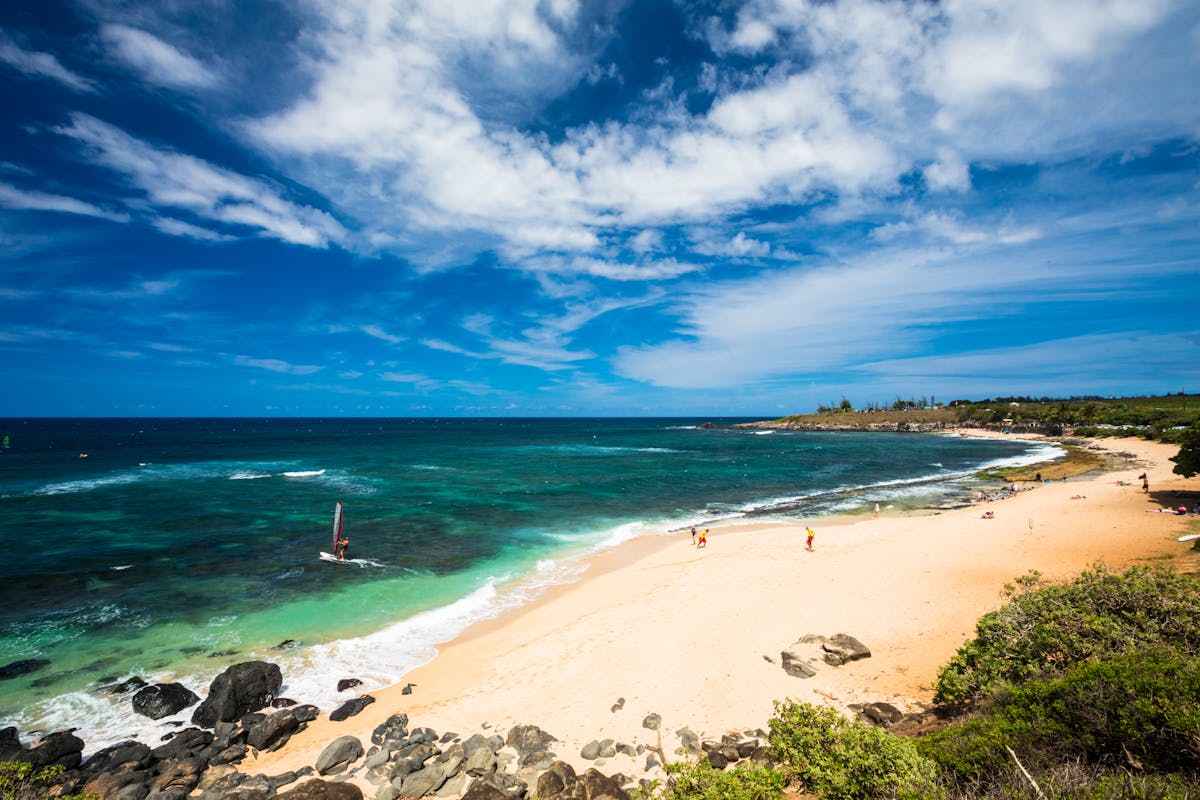
Hookipa Beach and bay at Paia, Maui. Photo by Tor Johnson, Hawaii Tourism Authority.
Maui
Hawaii's second-largest island tops the list of places Americans want to visit post-vaccine, according to a survey from flight-deal website Scott’s Cheap Flights. One of the top reasons: It’s pure tropical paradise, a dot in the Pacific, but still part of the U.S. More than 120 miles of shoreline and 80 sandy beaches ring the island, while colorful fish dart among the coral reef just offshore. There’s sheltered Kapalua Bay, with gentle waves; Napili Bay, great for snorkeling; and Makena Beach, where body surfers ride the waves.
In winter, Hawaii’s verdant landscape and relative warmth soothe winter-weary travelers, but summer just may be the best time to go. From April through November, the islands see less rain and warmer temperatures.
Before you settle into the new time zone, wake up early one day and watch the sun rise atop Haleakala, the largest dormant volcano in the world. From above the clouds, and with the ocean in the distance, it feels like you’re on top of the world. And since you’re on vacation in Hawaii, you are.
Don’t miss: If you can pull yourself away from the stunning beaches, consider a trip upcountry, which has a goat farm, a lavender farm and quiet towns. Consider looking for a hotel that engaged with a program called Malama, which means “care for” in the native language. Visitors volunteer by planting trees or making Hawaiian quilts for needy elders. At some hotels, the reward is a free extra night.
Getting there: United and Delta have both upped their service to Hawaii this summer, and seem to have kept prices competitive for now.
Note: Across Hawaii, travelers must show proof of a negative COVID-19 test taken within 72 hours of departure to the islands or quarantine for 10 days. Maui officials now require a free rapid test upon arrival at Maui’s airport for anyone on trans-Pacific routes, including from the mainland. Visitors must also download the AlohaSafe Alert app, an exposure notification app, on their mobile phones or face a mandatory 10-day quarantine.


